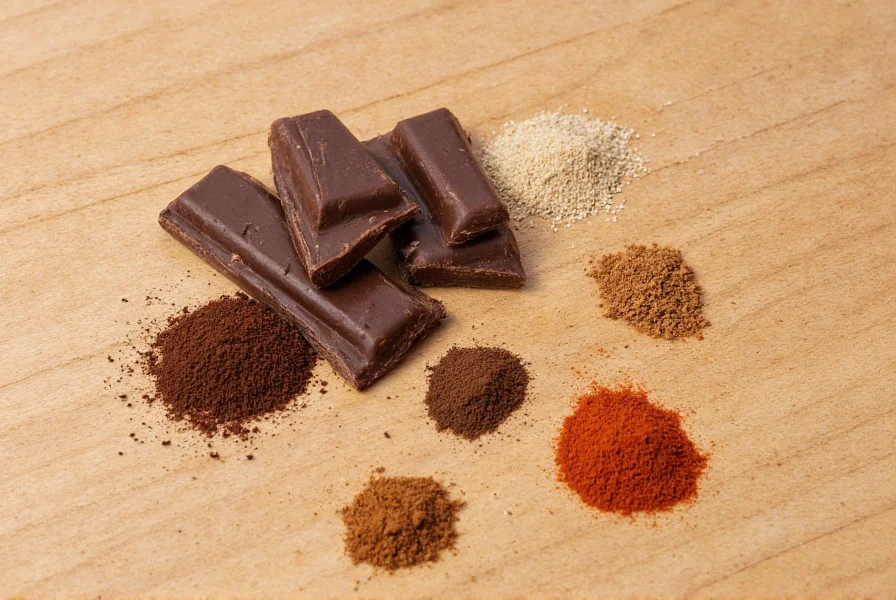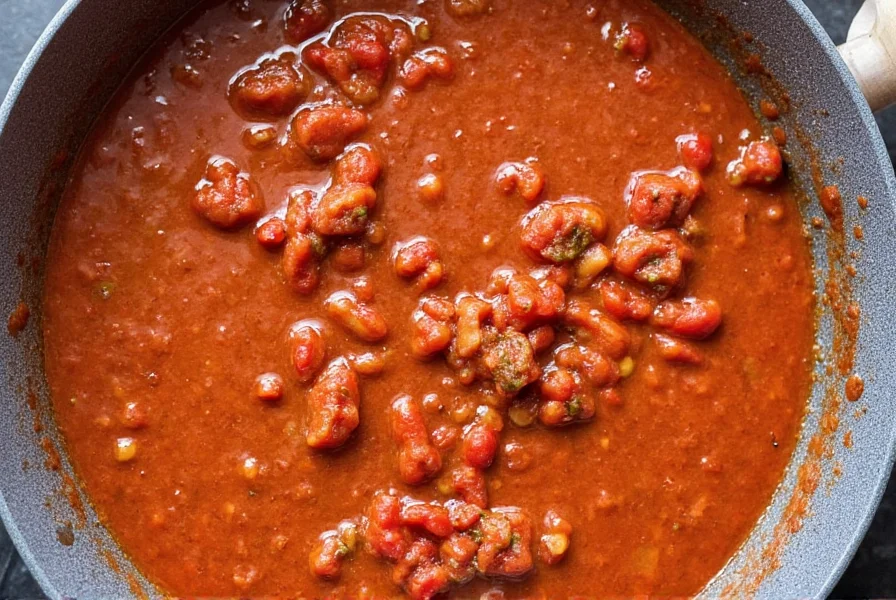Chili is one of those wonderfully adaptable dishes that welcomes creativity. Whether you're working with a traditional meat-based recipe or a vegetarian alternative, knowing what to add to chili can elevate your dish from ordinary to extraordinary. The magic happens when you understand how different ingredients interact with the base flavors of tomatoes, beans, and spices.
Essential Flavor Enhancers for Perfect Chili
Acidity is often the missing element in lackluster chili. A splash of apple cider vinegar or fresh lime juice added during the last 15 minutes of cooking brightens the entire flavor profile. This simple addition to chili for more flavor works because acid cuts through richness and makes other tastes more pronounced.
For umami depth, consider these professional chef secrets that work perfectly as what to add to chili for depth:
- Soy sauce or tamari (1-2 tablespoons) - adds savory notes without making chili taste Asian
- Fish sauce (½ teaspoon) - sounds strange but disappears into the background, enhancing meatiness
- Worcestershire sauce (1 tablespoon) - provides complex fermented flavor
- Miso paste (1 tablespoon, dissolved in broth) - excellent for vegetarian chili

Texture and Thickness Solutions
Many home cooks struggle with chili that's either too thin or unpleasantly thick. Instead of reaching for flour or cornstarch, try these natural thickeners that add flavor while improving texture:
| Thickening Agent | How to Use | Flavor Impact |
|---|---|---|
| Masa harina | 2-3 tablespoons mixed with broth | Subtle corn flavor, traditional |
| Cornmeal | 1-2 tablespoons stirred in | Mild corn taste, slightly grainy |
| Crumbled corn chips | Handful added near end | Crunchy texture, salty kick |
| Unsweetened cocoa powder | 1-2 teaspoons | Rich depth, no chocolate taste |
For what to add to chili to thicken it naturally, masa harina is the professional's choice. This traditional Mexican ingredient contains lime-treated corn that adds authentic flavor while creating the perfect chili consistency.
Heat Management Techniques
Understanding what to add to chili to reduce spiciness or increase heat is crucial for customizing to your taste preferences:
To Reduce Spiciness:
- Acid - A tablespoon of vinegar or citrus juice neutralizes capsaicin
- Sweetness - 1-2 teaspoons of sugar, honey, or maple syrup balances heat
- Dairy - Stir in sour cream or yogurt at serving time (not during cooking)
- More base ingredients - Add additional tomatoes, beans, or broth to dilute
To Increase Heat:
- Fresh chilies - Add minced jalapeño, serrano, or habanero during cooking
- Chipotle peppers in adobo - 1-2 peppers blended into the mix
- Cayenne pepper - ¼ teaspoon at a time until desired heat is reached
- Hot sauce - Choose vinegar-based options like Tabasco for clean heat
Secret Ingredients That Make Chili Shine
Professional chefs often include these unexpected additions when deciding what to add to chili for restaurant-quality results:
- Coffee or espresso (½ cup) - deepens flavor without making chili taste like coffee
- Dark chocolate (1 ounce) - adds richness and balances acidity
- Beer (12 ounces) - the carbonation tenderizes meat while hops add complexity
- Smoked paprika (1-2 teaspoons) - provides subtle smokiness without liquid smoke
- Instant espresso powder (1 teaspoon) - enhances meat flavors in beef chili

Timing Matters: When to Add Ingredients
Knowing not just what to add to chili but when to add it makes a significant difference:
- Early in cooking: Dried spices, meat, onions, garlic - allows flavors to meld
- Middle of cooking: Beans, tomatoes, broth - prevents overcooking
- Last 30 minutes: Acidic elements (vinegar, citrus), chocolate, coffee - preserves their bright notes
- At serving time: Fresh herbs, dairy, avocado, lime wedges - provides contrast
Acidic ingredients added too early can cause beans to remain hard, while delicate flavors like fresh lime juice lose their brightness when cooked too long. This timing knowledge is essential for what to add to chili at different stages.
Dietary-Specific Additions
Customize your chili regardless of dietary needs with these targeted additions:
Vegetarian/Vegan Options:
- Mushroom broth instead of meat stock
- Smoked salt for meaty depth
- Liquid smoke (sparingly) for barbecue notes
- Textured vegetable protein as meat substitute
Gluten-Free Considerations:
- Ensure all sauces (soy, Worcestershire) are certified GF
- Use corn-based thickeners instead of flour
- Check beer ingredients if using in recipe
Common Mistakes to Avoid
When considering what to add to chili, steer clear of these pitfalls:
- Overloading spices - Start with less; you can always add more
- Adding salt too early - Wait until end to adjust seasoning
- Using sweet ingredients indiscriminately - Balance is key; too much sugar creates dessert-like chili
- Skipping the resting period - Let chili sit for 15-30 minutes before serving for flavors to marry
Remember that chili often tastes better the next day as flavors continue to develop. Store properly cooled chili in an airtight container in the refrigerator for up to four days, or freeze portions for longer storage.











 浙公网安备
33010002000092号
浙公网安备
33010002000092号 浙B2-20120091-4
浙B2-20120091-4